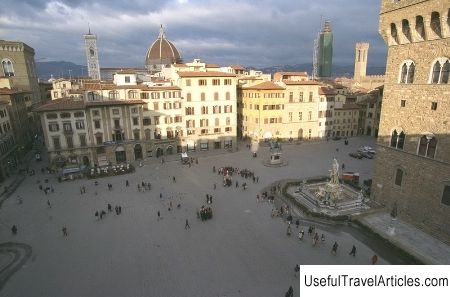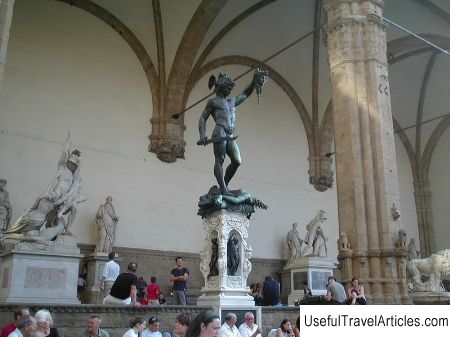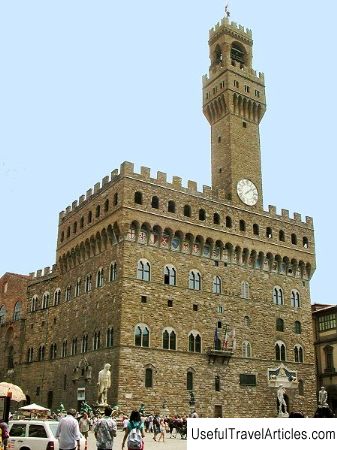Piazza della Signoria description and photos - Italy: Florence
Rating: 7,9/10 (7965 votes) 
Piazza della Signoria description and photos - Italy: Florence. Detailed information about the attraction. Description, photographs and a map showing the nearest significant objects. The name in English is Piazza della Signoria. Photo and descriptionTo the left of Palazzo Vecchio is the picturesque Neptune fountain, richly decorated by the sculptor Bartolomeo Ammannati and his assistants (1563-1575). In the center of the fountain there is a huge figure of a sea god made of white marble, towering on a chariot drawn by four sea horses. The Florentines named this huge white statue the Biancone (White giant), and this name was preserved for him. Of particular interest are also the beautiful bronze sculptures at the base of the fountain. Next to the fountain stands the equestrian statue of Cosimo I Medici, Grand Duke of Tuscany, made by the sculptor Giambologna in 1594. This monument amazes the viewer with the nobility of the features and posture of the rider and the powerful forms of the horse. The bas-reliefs on the pedestal represent the main events in the life of the Grand Duke of Tuscany. The Medici family ruled the city for a long time and supported the common people in their struggle against the guilds. On the Piazza della Signoria, there is the Loggia Lanzi, named so in memory of the Landsknechts, the mercenary soldiers who guarded Cosimo I. The Loggia of Lanzi was built by the architects Benci di Cione and Simone Talenti (1376-1382) and was intended for solemn meetings of the Signoria. The light, graceful structure is typical of the late Gothic. Above the pylons are medallions with reliefs of the Virtues, made in 1384-1389 according to the sketches of Agnolo Gaddi. The central opening of the loggia is flanked by the figures of two lions. There are many valuable sculptures inside the loggia. Left - the famous `` Perseus '' with the severed head of Medusa the Gorgon. (1553), and on the right - `` The Rape of the Sabine Women '' Giambologna (1583). In the center is Hercules and the Centaur, also by Giambologna (1559), Ajax with the Body of Patroclus, an ancient Greek sculpture; Polyxena's Abduction sculptor Pio Fedi (1866). There are six antique female statues at the back wall of the loggia.         We also recommend reading Lithuanian Sea Museum, Aquarium and Dolphinarium (Lietuvos juru muziejus) description and photo - Lithuania: Klaipeda Topic: Piazza della Signoria description and photos - Italy: Florence. |




